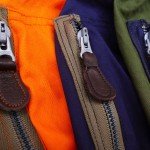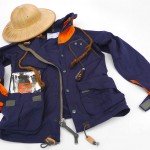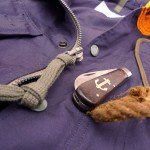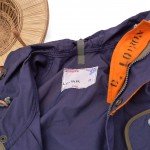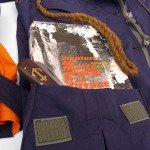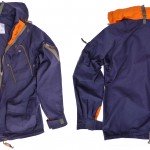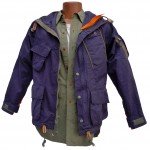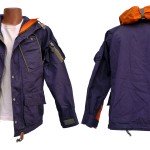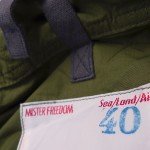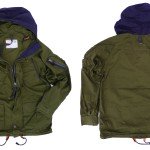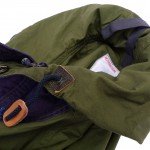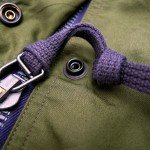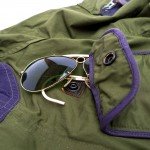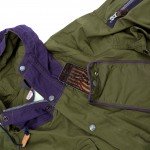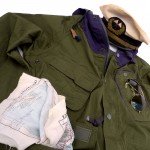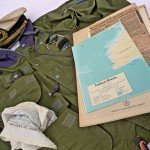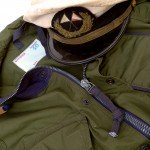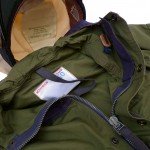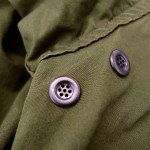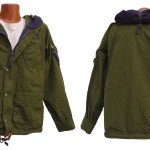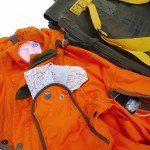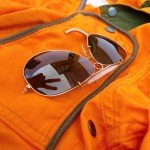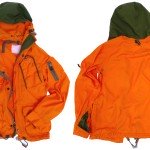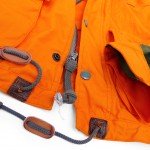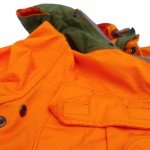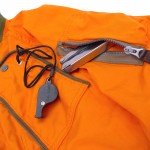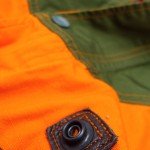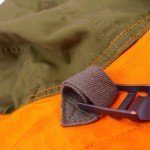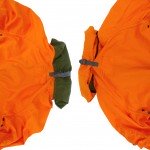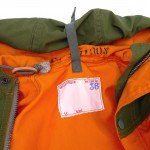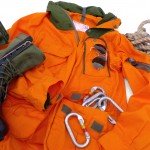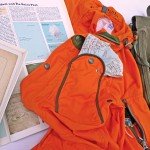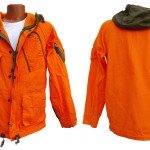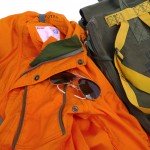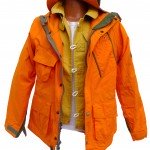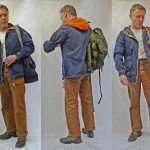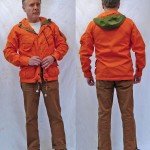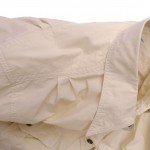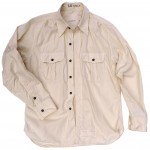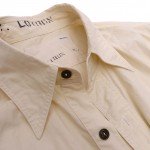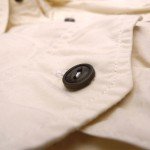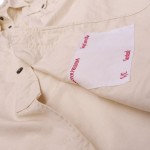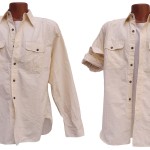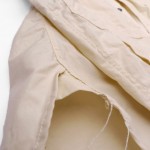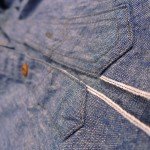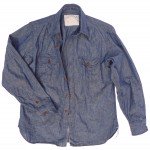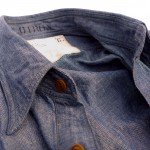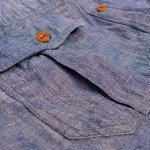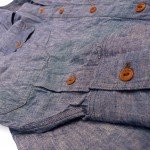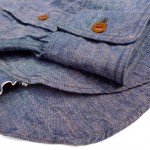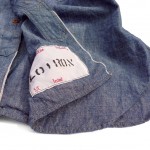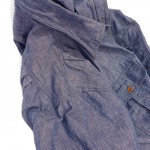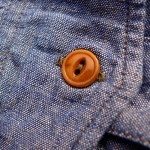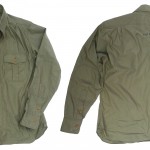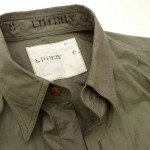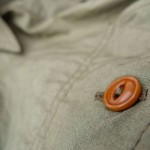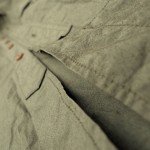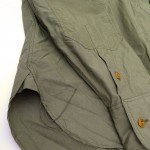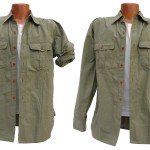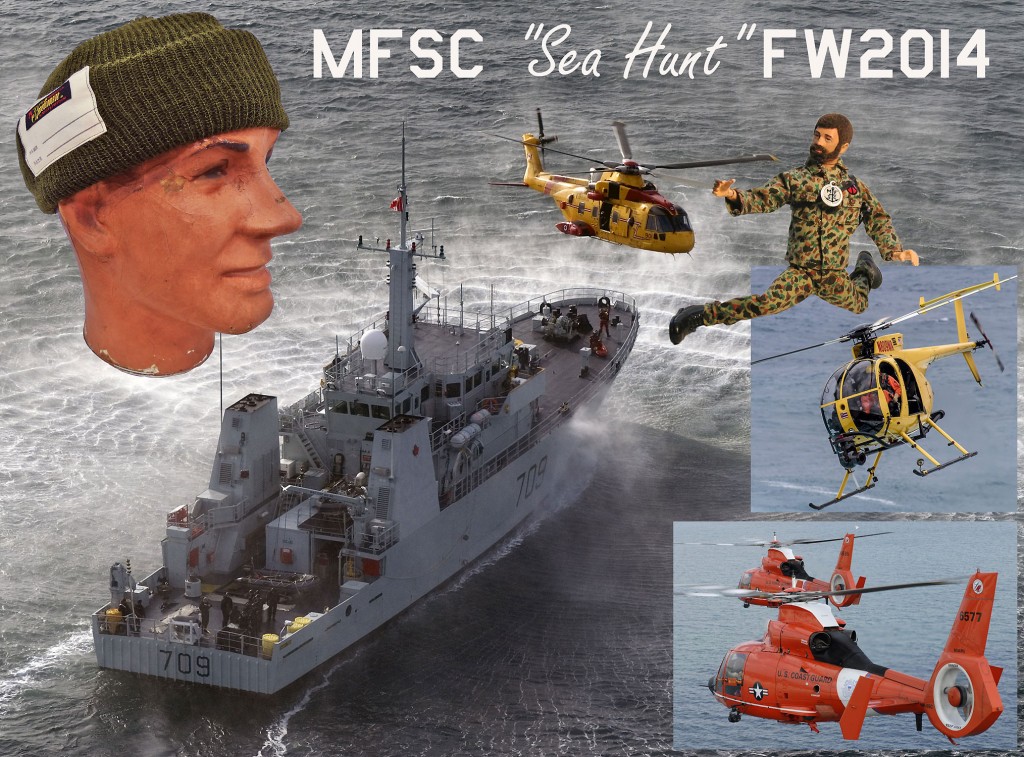
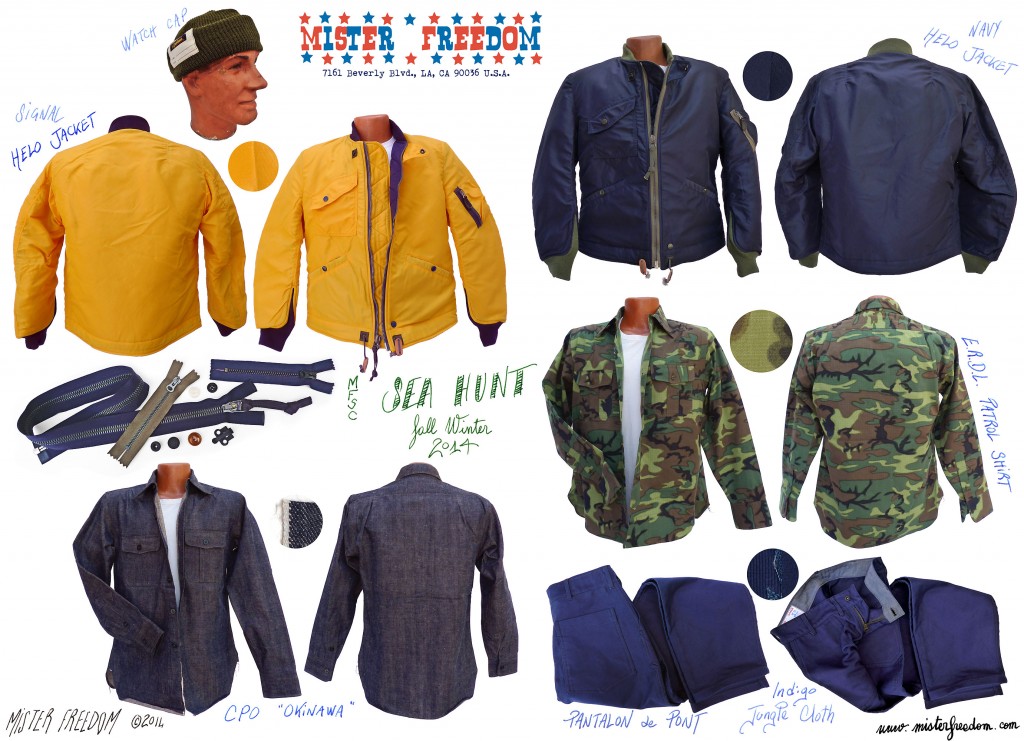
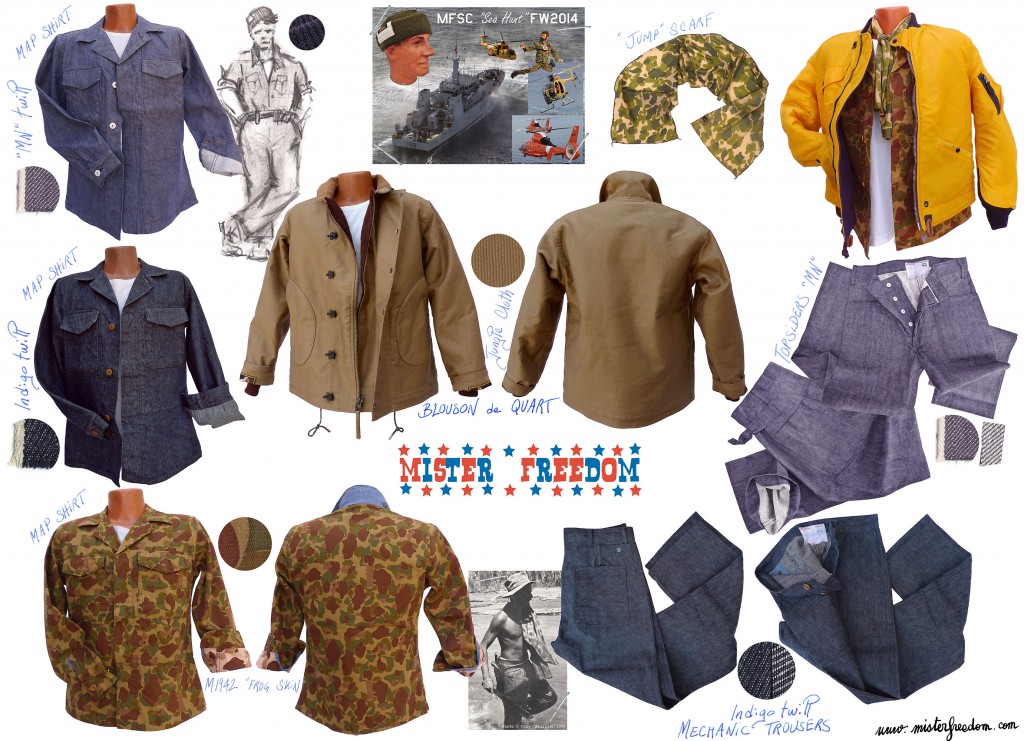
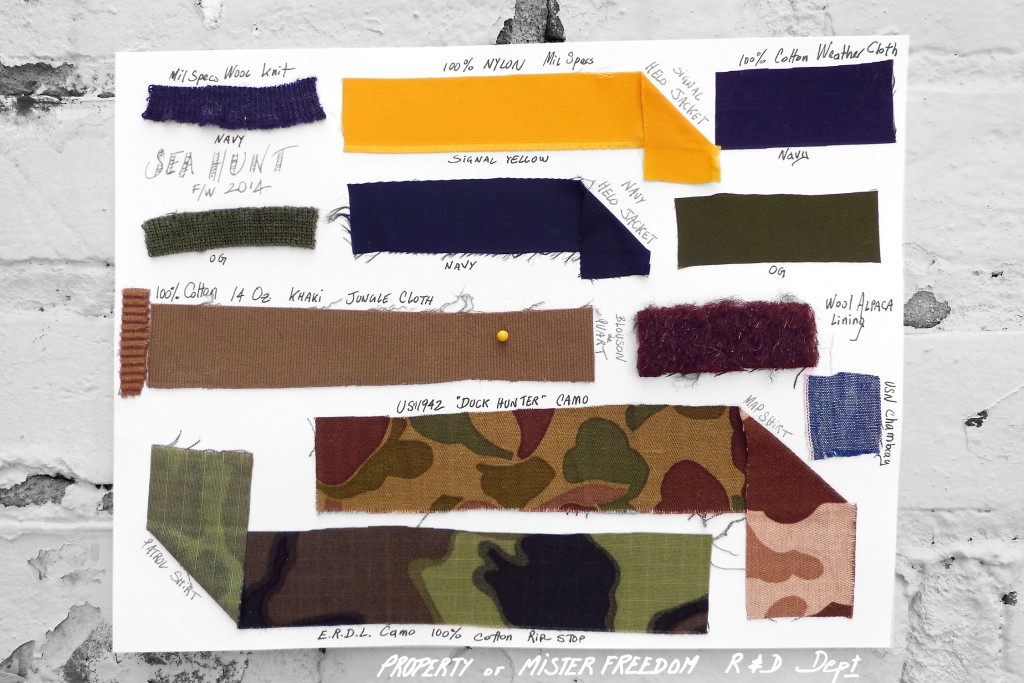
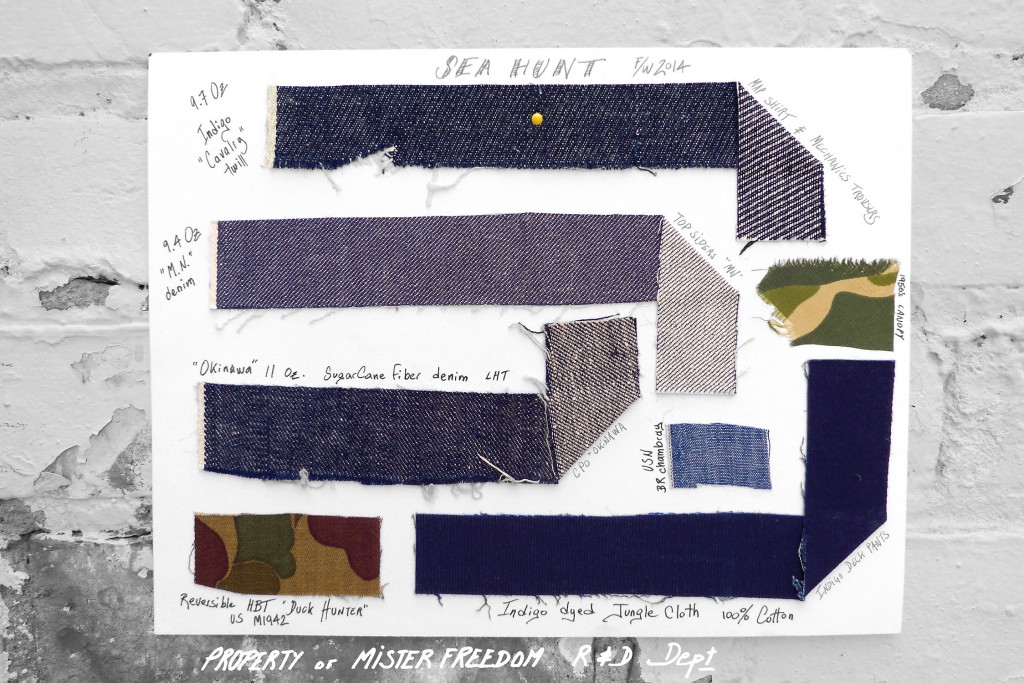
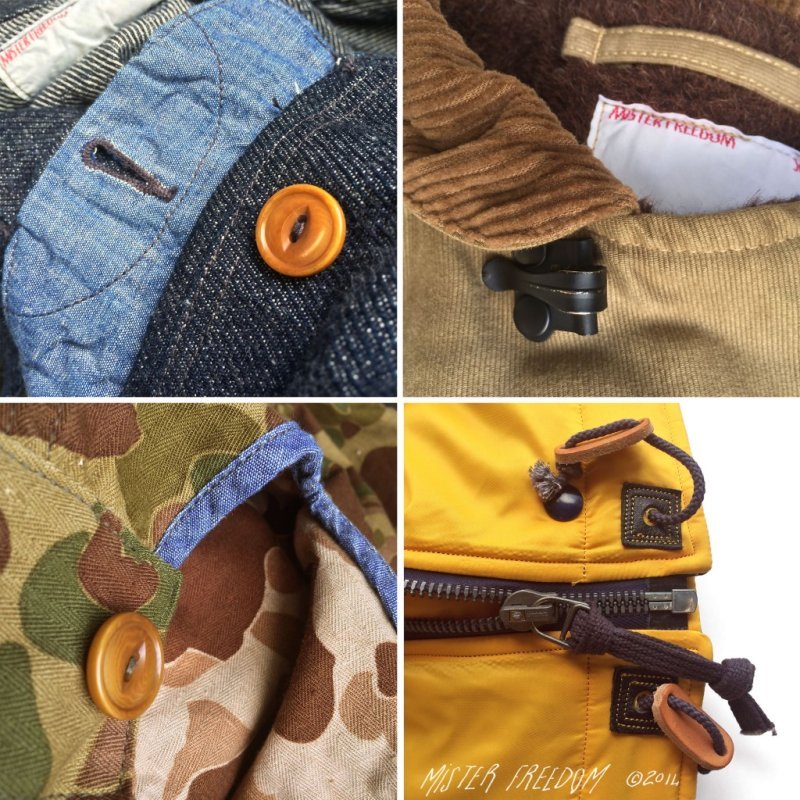
The “SEA HUNT” Collection
mfsc Fall 2014
To the intrepid few who have survived Season One of our “Sea Hunt” venture, we recommend a hard-training summer.
Because, my friends, things are about to get silly agitated comes Fall, à la Bebel!
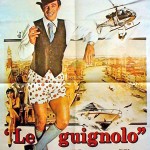 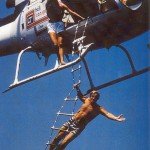 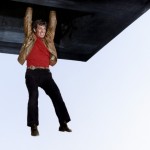 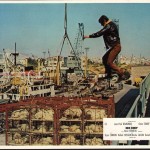 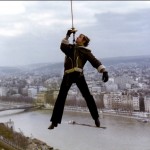 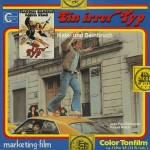
As a Spring 2014 boot camp survivor, it is clear you will have no issue with the ‘jump out of airborne helo/land on speeding zodiac’ routine of the up-coming Fall season. The several jungle incursions and a secret mission in the unforgiving Atacama Desert should also be a breeze. And for the hard-to-thrill, we will also offer ice diving with Greenland shark feeding.
Due to demanding ops, we have developed new exclusive fabrics for Fall 2014, along with some rather intricate original patterns. All that to be fully disclosed in details sometime around September 2014, if all our stunts go as planned.
The sea bag of the Int’l Man of Action for the next “Sea Hunt” chapter will include:
* Two “Helo” Jackets, nylon.
* One “Okinawa CPO” shirt, SC301 denim.
* One pair of “Pantalon de Pont“, indigo jungle cloth.
* One ERDL “Jungle Leaf” Patrol Shirt, cotton ripstop.
* Three “Map” Shirts, indigo denim twill/M1942 camo/Marine Nationale denim.
* One pair of “Mechanic” Trousers, indigo denim twill.
* Two Watch Caps, wool knit.
* One “Blouson de Quart“, khaki jungle cloth.
* One pair of “Topsiders”, Marine Nationale denim.
* One zboub.
You will hear the signal.
Your gear will be lined up on your cot by 0500.
Your mission orders will be forwarded to the usual rally point.
Thank you and good luck.
Mister Freedom® HQ,
Los Angeles, CA.
Props courtesy of HMCS Saskatoon, USCG, Windward Aviation Inc and Hasbro Inc.
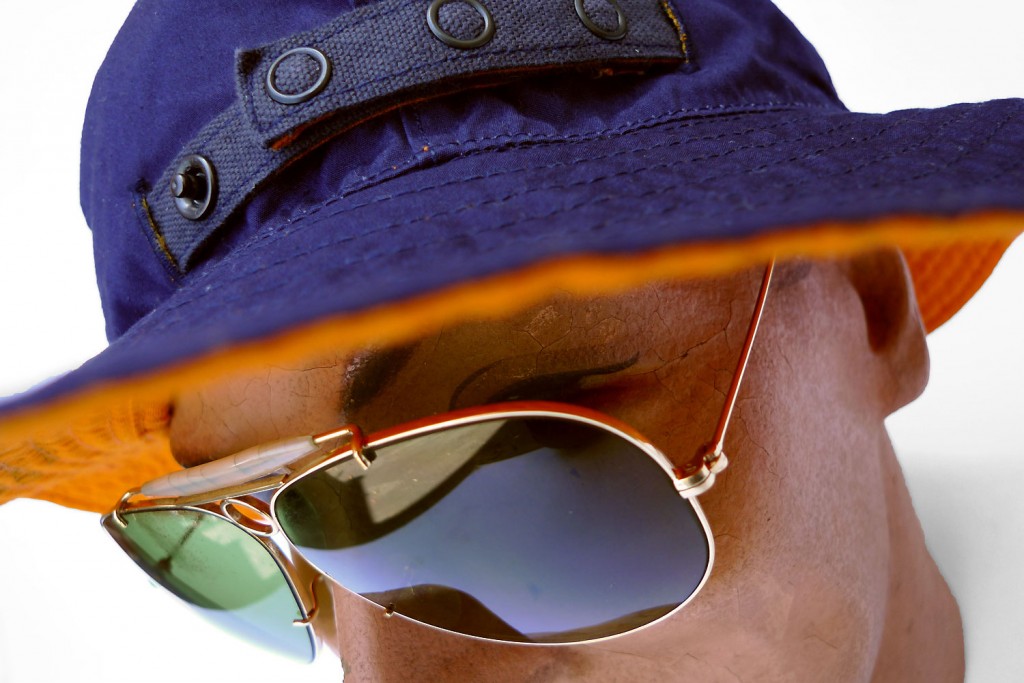

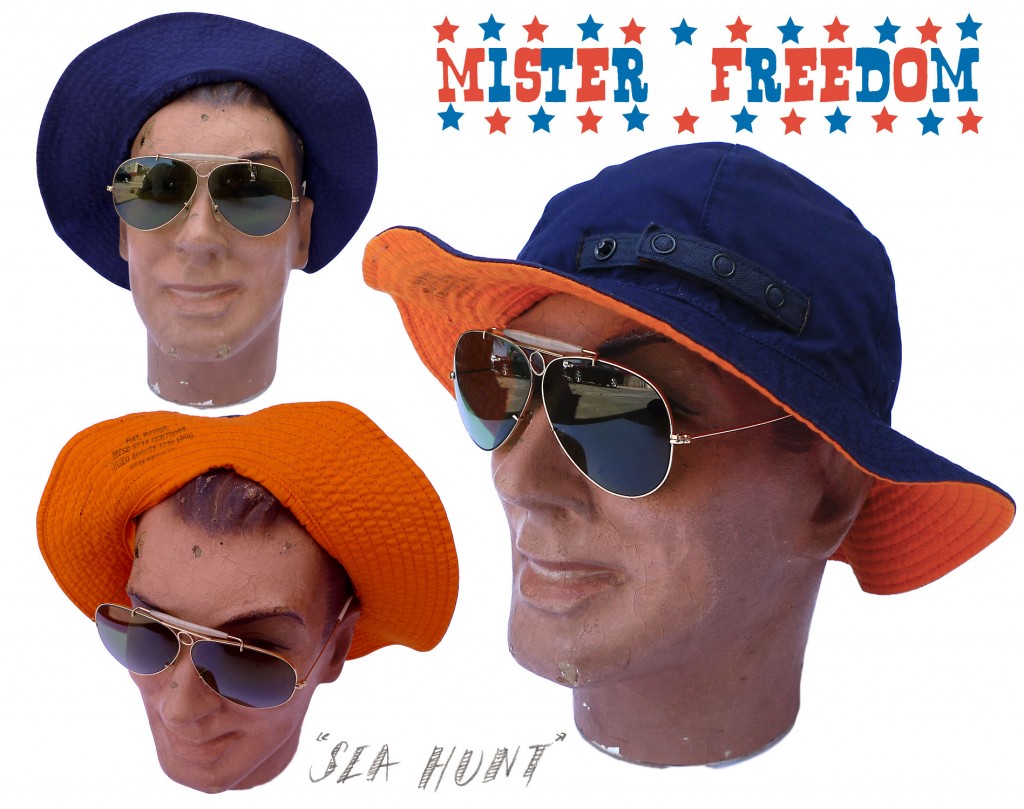 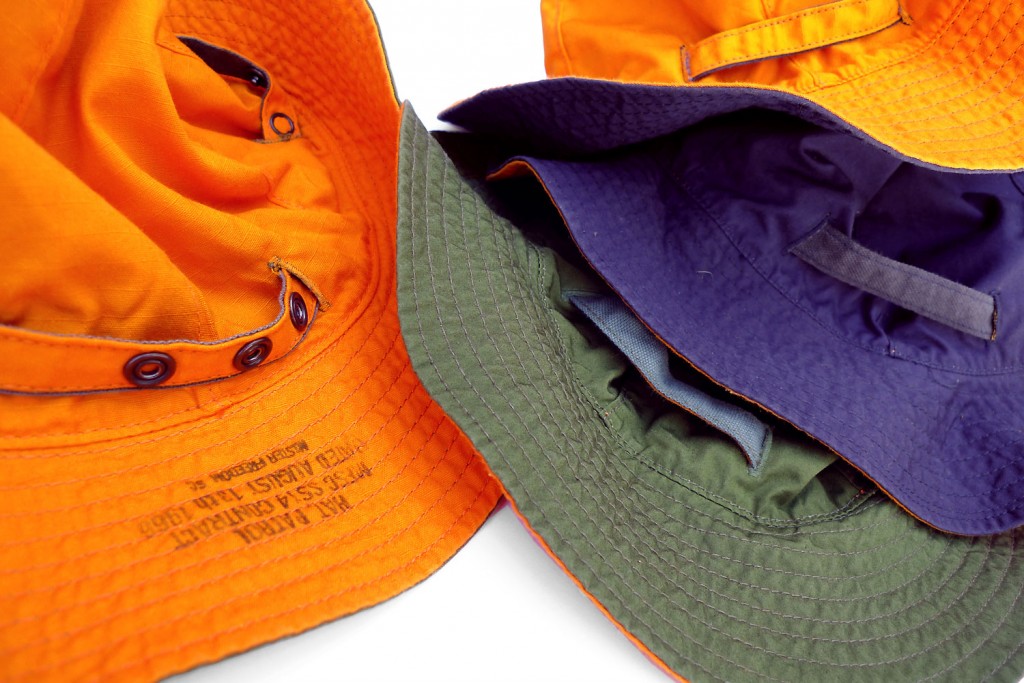
-
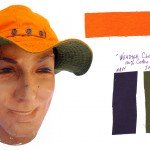
-
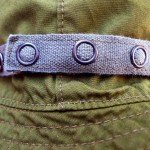
-
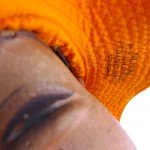
-
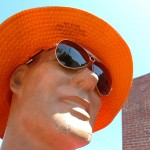
-
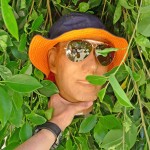
-
Hunter Thompson on location in the Mato Grosso
-

-
One hat, endless fun
HAT, PATROL
Mister Freedom® mfsc Spring 2014
“Sea Hunt” Collection
Expertly loaded with all the necessities useful to the downed aviator, one of the fifteen pockets of the C-1 Survival/Sustenance vest contained… a floppy hat.
Approved around 1943 by the Arctic-Desert-Tropic Branch HQ (Air Force Tactical Center, Orlando, Florida), that cotton popeline survival hat was reversible, in order to adapt to the following scenarios:
1) Monkey trap: The final bite of K-ration announced it was time to rig up your dinner MacGyver style, following instructions of the survival manual. The “HAT, SUN” was to be worn green (OG-107) side out, to blend in the hostile jungle while hunting.
2) When attempting to get spotted by a research/rescue party, you’d flip the hat to the ’emergency yellow’ side.
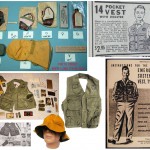 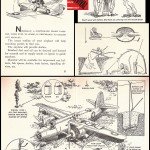
On paper, the content of the C-1 vest and other 1940’s survival kits such as those packed in type A-3 rafts, was what would separate a survivor from a permanent MIA.
Some accounts of actual survivors have told different stories about those kits however. Just ask Captain Louis Zamperini… (beware, you might not be able to put that book down.)
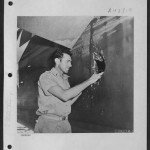 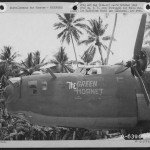 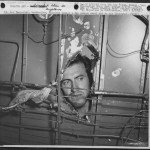 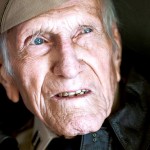
When lost at sea, adrift in a perforated yellow raft, the combo no knife/wet matches/four-page tutorial on conversational Western and Eastern Eskimo of the red Survival Manual, was sure to be an instant relief.
So you know, “Kah-bloon-ah nowk?” means “Where is there a white man?” in the East of the Arctic. In the West, “Nah-ne Kah-sah tahng-tah” will suffice.
During the Vietnam war, a similar cover was issued with an orange emergency side, as part of the “Over Water and Hot Climate Aircraft Survival Kit”. For high-visibility/rescue type gear, it seems that the color of choice went from safety yellow to blaze orange sometime in the early 1960’s?
It appears that the content of contemporary survival kits has not much changed since WW2, but the bucket hat has today been dropped.
For an educated current opinion on survival at sea in the US Navy, this insider’s perspective makes for an interesting read.
Ok. Back on point…
The soft crown vintage “HAT, SUN” that inspired our Mister Freedom® “HAT, PATROL” is of a very similar pattern than that of its aforementioned yellow/olive green grandfather issued with the C-1 vest. I believe the vintage sample from our archives was part of a mid 80’s “SURVIVAL KIT, COLD CLIMATE” aircraft bag. COLD or hot, that is the question.
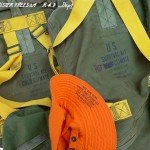 Vintage aircraft survival gear Additionally, some of you might remember a “Deck Hat” from a 2008 naval collection we did, using that same pattern.
This season, the hat of choice of our “Sea Hunt” Team features a survival/rescue side.
The fabrics we used are the same as the Skipper Jacket options, 6 Oz. cotton weather cloth, navy blue or olive green, with an orange 4.75 Oz. cotton RIPSTOP fabric lining.
The adjusting headband tape is also reversible and can be displayed matching or contrasting.
A classic military design revisited by Mister Freedom® and manufactured in Japan in collaboration with Sugar Cane Co.
SPECS:
PATTERN: Inspired by vintage US military survival gear.
FABRIC:
Two color options, both lined with a ‘blaze orange’ cotton Ripstop fabric.
a) Navy Weather Cloth: 100% cotton 6 Oz. tightly woven windbreaker popeline, milled in Japan.
100% cotton 6 Oz. tightly woven windbreaker popeline, milled in Japan.
DETAILS:
* Reversible
* Foldable and lightweight.
* Adjustable headband tape, mil-specs snaps.
* Made in Japan
WASHING/SIZING:
One size fits all. Machine washable, low maintenance.
Retail $149.95
Soon available from www.misterfreedom.com
Please call 323-653-2014 or email sales@misterfreedom.com with any questions not answered above.
Thank you sincerely for your support.
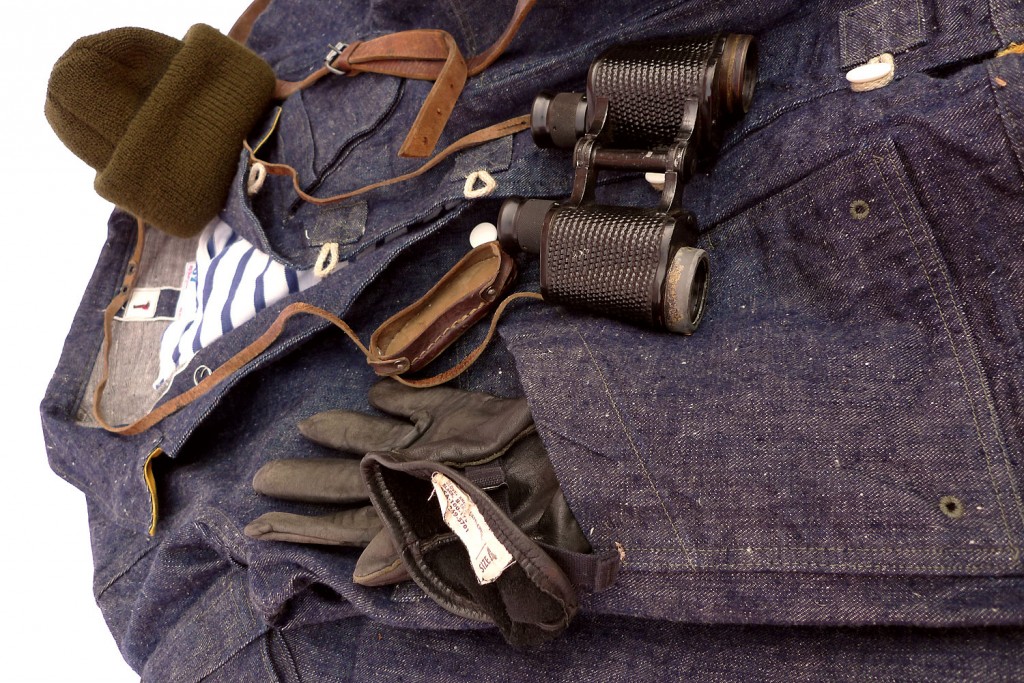
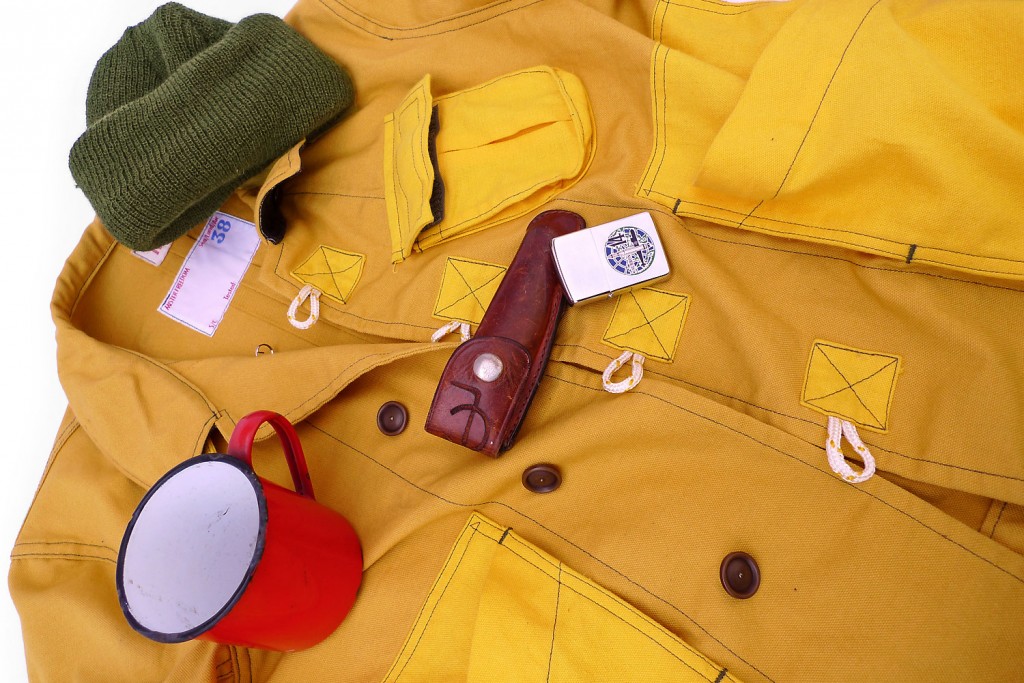
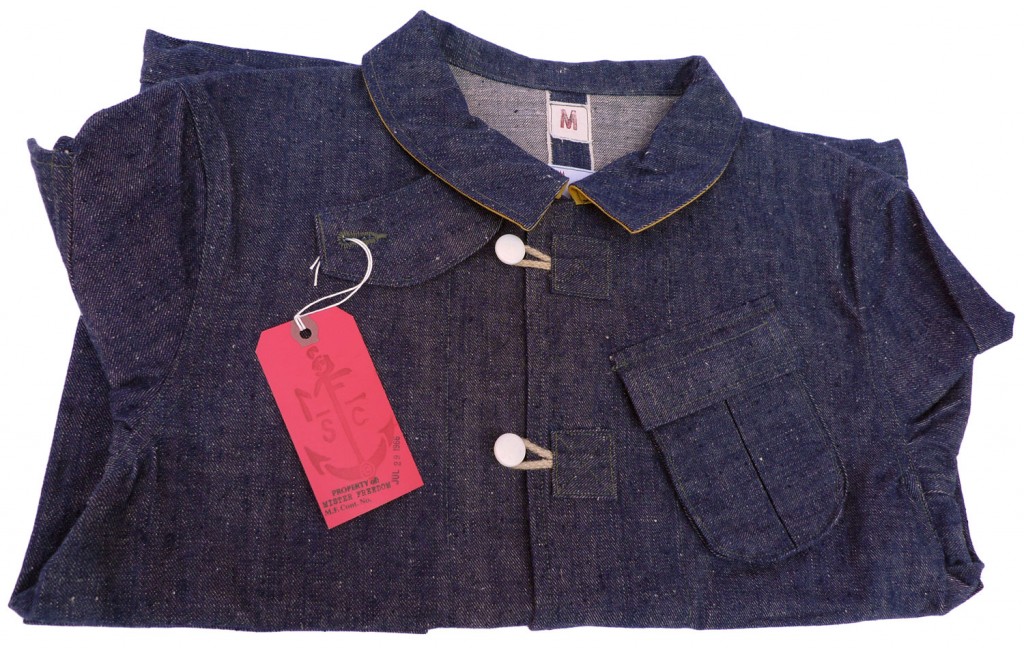
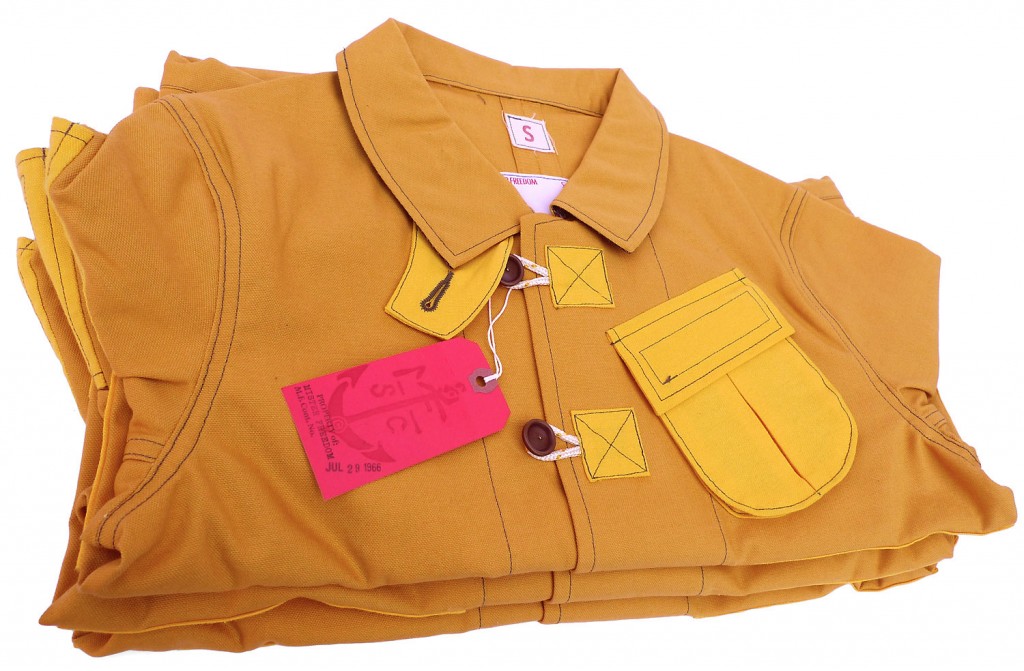
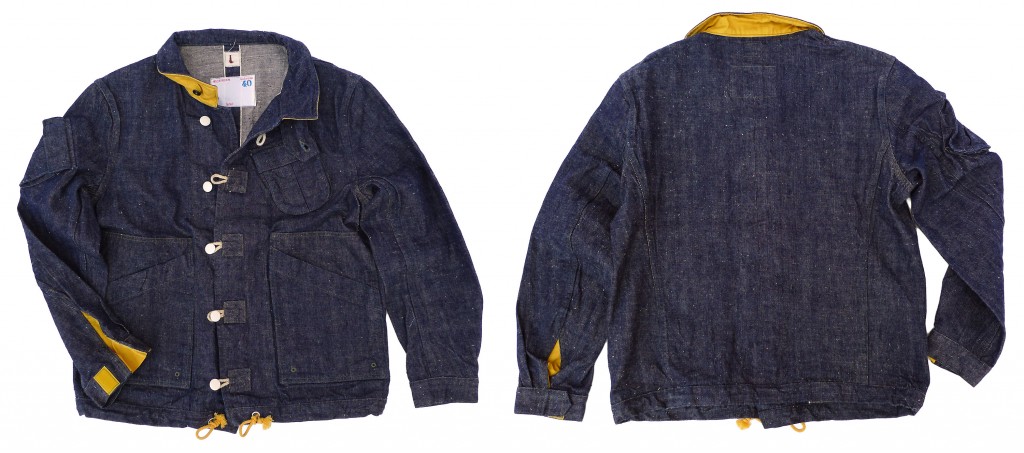
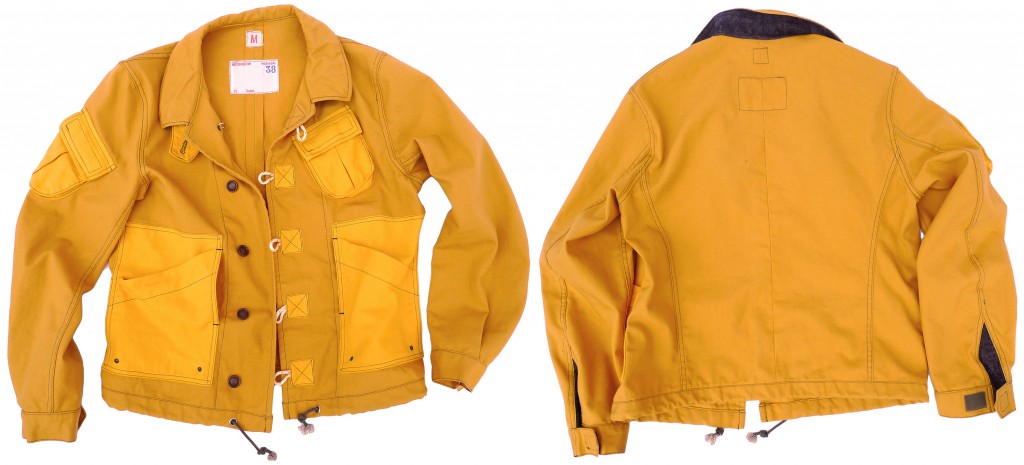
-
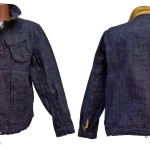
-
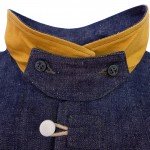
-
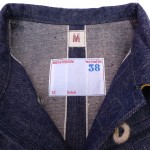
-
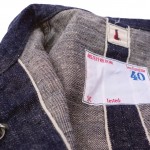
-
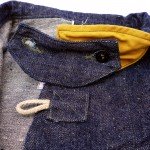
-
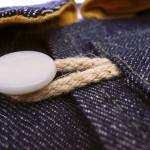
-
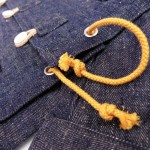
-
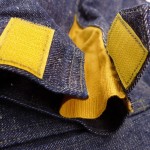
-
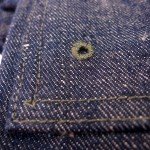
-
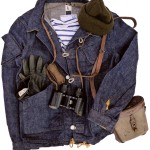
-
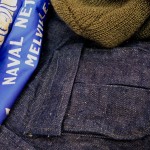
-
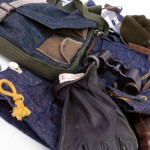
-
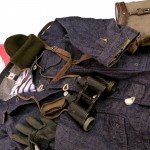
-
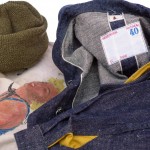
-
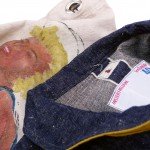
-
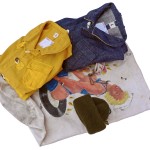
-
Our sales dept suggested we’d show some skin?
-
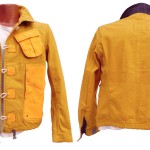
-
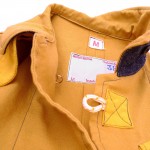
-
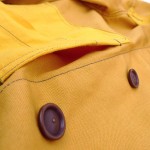
-
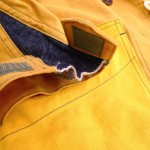
-
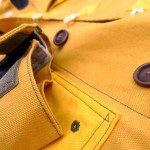
-
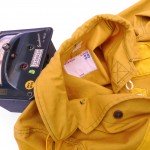
-
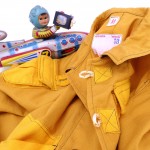
-
Our first Watchman customer, visiting from Kepler-186f
-
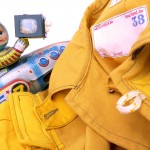
-
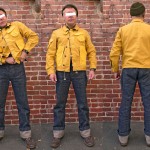
-
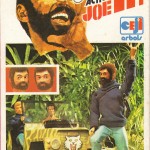
WATCHMAN Jacket, Okinawa & Banana Camo (Raft Yellow)
“Sea Hunt” Collection, mfsc Spring 2014
Those with beauty sleep requirements should greet the suggestion of joining the crew of a military ship with “Euhh, like no“.
While at sea, days are divided in six watches of four hours, if I remember well. A typical work day on board starts with the 0730 wake-up call, and ends somewhat about nine hours later. Then comes the watch. If the 2000 to 2400 is not bad, the mid-watch of 0000 to 0400 is lovely.
I thought of leaving the mission to comply with the International Regulations for Preventing Collisions at Sea rules of 1972 to more qualified personnel, and decided to work around those graveyard shifts by dozing off. In the dimly lit sauna-like transmission cabin where I stood my watch, I developed an elaborate survival routine. It involved finely tuning my ear for the sound of approaching footsteps as I laid on the steel floor, and a well rehearsed fully-alert facial expression conveying a “just picking up my pen, Chef” type message.
I never got caught by the chef de quart though. I suspect that efforts at keeping that cabin productive past midnight had long been abandoned by command. By the end of my tour, I eventually found an actual folding cot, concealed behind some clunky equipment belonging to the radio guys in the adjacent cabin.
And I thought I had the routine down…
To balance with such fine examples of efficiency and professionalism, a ship at sea needs a proper watchman. The International Maritime Organization stipulates that:
“Every vessel shall at all times maintain a proper look-out by sight and hearing as well as by all available means appropriate in the prevailing circumstances and conditions so as to make a full appraisal of the situation and of the risk of collision.”
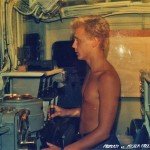 
And now, with no further ado, the stuff of legend, your pulp fiction dose of non-sense, the anticipated episode of “Tall Tales From Delusion Island”!
Here she goes.
…While cruising warm tropical waters, the Watchman Jacket turned out to be a practical garment for the Team’s lookout. Not every day brought its load of sunken XVI Century galleon cargo. So, standing watch on deck or at the helm could prove monotonous. The multiple pockets became a blessing. Housing everything from notebooks, first aid kit, carving knife, maps, snacks, rum flask, iPod… and of course the apple to keep the corpsman away.
When scouting on shore, the sturdy denim twill version was often preferred over the high-visibility raft yellow model, a color typical of pro seafaring gear.
Granted, denim is a good look in the jungle, but signaling your presence is a double edged machete. So here is another story for you.
The Team had organized a few expeditions to Netherlands New Guinea (known today as Indonesia), attempting to shed light on the fate of an adventurous 23 year-old by the name of Michael Rockefeller (yes, that Rockefeller), who vanished in November 1961 while collecting Art on cannibal territory, of all places. This unlikely outcome of privileged upbringings stirred the International press interest in the region. Extensive Dutch government and Rockefeller family organized air-sea search parties flocked.
All that was found was an empty red gasoline can that the young explorer had strapped himself to while trying to reach shore after his boat capsized at the mouth of the Betsj river and drifted to sea… His companion of misfortune, scientist Rene Wassing, who opted to cling on to the capsized boat and wait for a rescue team, survived.
So…
Did Michael simply drown?
Was he abducted by Papuan tribesmen and promoted Great-White-God-Who-Comes-From-The-Sea?
Was he speared by an aggravated headhunter protecting his stone age status?
Was he spotted some seven years later on the remote island of Kanapu, as claimed a mysterious Australian smuggler known as ‘Donahue‘?
Is he hanging in the Asmat Chief’s hut, like on the wall?
Crocodile bait?
….
Are you still there?
Allo.
Allo?
For the brave few still awake, the 1961 documentary film “Le Ciel et la Boue” (“Sky Above and Mud Beneath”), although not directly related since it documents an earlier event (a 1959 French expedition that crossed the then uncharted jungles of the entire New Guinea island, from South to North), would provide a proper visual backdrop to the above (true) story. I just found a copy on DVD (it’s an added bonus on the 1976 French film “Black and White in Color“, easier to find than the original documentary), looking forward to watching it.
Another recent find is “La hache de pierre“, a book by Gérard Delloye documenting the filming of that 1959 ethnographic endeavor. The footnotes mention that the book brings some interesting perspective on Michael Rockefeller’s vanishing… Most photos below are copyright of Tony Saulnier, photographer on that venture.
In 1961, the year of the disappearance, Operation Trikora was to take news anchors attention away from this Rockefeller case. But that’s another story, enough drifting for a day.
However, for the latest whereabouts of Michael Rockefeller, insomniacs can look here and there and everywhere.
-
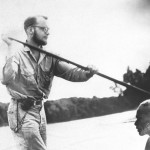
-
Michael Rockefeller 1961
-
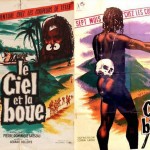
-
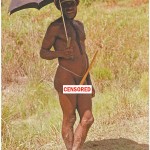
-
Protecting oneself from the ravage of the sun
-
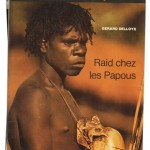
-
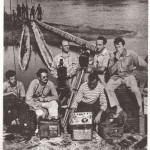
-
French team that filmed “Le Ciel et la Boue” 1959
-
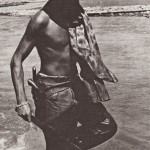
-
Gerard Delloye, author of “La Hache de Pierre”
-
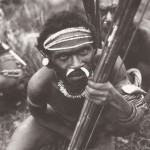
-
Asmat warrior, West Papua
-
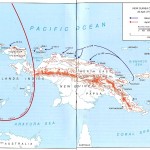
-
New Guinea
It’s almost time for Kumbaya, so let’s regroup around our Spring 2014 “ Sea Hunt” camp fire.
The Team liked to keep it light on emotionally-charged rescue missions. While on treks in West Papua, the running joke with the mangrove-scouting pirogue patrol was that in the event of an encounter with javelin-agitating Asmat headhunters, Team members could use the raft yellow Watchman jacket to go climb up banana trees and hide. The name ‘banana camo’ stuck, while the denim issue was nicknamed ‘Okinawa’ due to the provenance of the sugarcane fibers that constituted 50% of the fabric content.
This original Mister Freedom® jacket design is somewhat of the UFO of our “Sea Hunt” Spring 2014 Collection.
The two lower chest pockets are inspired by a 1930’s US Army pullover denim shirt. The keen eye will notice that the Watchman Jacket pockets differ from its 1930’s sisters however. There is an added layer with a slanted opening, upgrading the original somewhat impractical ‘map’ pockets to ‘shove-it-all-in’ status.
Serendipity has it that Mr. Gilbert Sarthre, cameraman on that French 1959 expedition, was wearing one of those 1930’s US army denim pullover shirt. Military surplus was not an unusual part of an adventurer’s field gear, as often documented in period photography and old film footage.
-
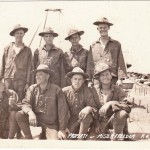
-
Denim pullover shirts, US Army circa 1937
-
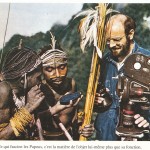
-
Cameraman Gilbert Sarthre wearing a surplus 1930s US Army denim pullover shirt, 1959
-
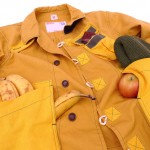
-
Banana tree survival kit, tested April 2014.
As with our Skipper Jacket, hi-tech Velcro® closures are featured on the slanted pockets and wrist cuffs.
Removable buttons, a feature of several early vintage uniforms and workwear, made snagging less likely during laundry. For the Okinawa Watchman, we used vintage New Old Stock composite anchor ring-buttons, familiar to those of you who have already flown a Pensacola seaplane.
The ‘Banana Camo’ features buttons made from, you guessed it, tropical palm trees (corozo wood, aka ivory nut.)
On the chapter of the nautical type front closure, the button attachment loops are made from genuine NOS paracord, an obvious overkill, I agree.
The WATCHMAN Jacket is designed in California by Mister Freedom® and manufactured in Japan in collaboration with Sugar Cane Co.
SPECS:
FABRIC:
a) “OKINAWA” Denim: Unsanforized 10 Oz. left-hand twill indigo denim, 50% cotton 50% sugar cane fibers, solid white Selvedge ID, milled in Japan. (SC401)
b) “RAFT Yellow” canvas, aka ‘Banana Camo’: New Old Stock 100% cotton canvas, mid-weight, solid selvedge. Two different shades of yellow are used. The body is more mustard yellow, while pockets offer a subtle contrast with a brighter yellow (for US production only). We found a limited amount of this NOS canvas.
DETAILS:
* An original mfsc pattern, inspired by the wonderful world of vintage clothing and cannibals.
* Shorter type length, reminiscent of vintage fishing jackets.
* Removable ring buttons, NOS composite anchor for the denim issue, corozo wood for the yellow canvas.
* Two lower ‘double’ pockets and two slanted inverted box-pleat pockets (arm and chest)
* Removable throat latch.
* Velcro® pocket closure and wrist cuffs.
* Split back panels and front panels facing display fabric selvedge.
* Contrast wrist gussets and collar facing fabric.
* 100% cotton stitching, Olive Green color.
* Unlined, with no open or overlocked visible seams.
* Bottom adjusting cotton string.
* Made in Japan.
WASHING/SIZING:
Both “Okinawa” and “Raft yellow” options come unwashed and will approximately shrink to the same tagged size with an original cold soak/line dry. Further shrinkage to be expected with the use of hot water and heat dryer, obviously not recommended for the Okinawa denim issue.
Do REMOVE the buttons when machine washing this garment, as the metal rings tend to snag the fabric during agitation and spinning cycles. Please note that some color transfer from the indigo denim to the yellow canvas might occur should you use a heat dryer.
The fit is quite generous, although intently on the shorter side, somewhere between the Skipper and the Ranch Blouse. The resulting silhouette will obviously vary according to one’s built and body proportions.
I am usually a medium (38) in mfsc jackets, and am wearing a 38 in the Watchman.
Please refer to cold soak/line dry measurements chart below.
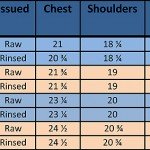 Raft Yellow Available RAW/unwashed.
SIZES:
36 (Small)
38 (Medium)
40 (Large)
42 (X-Large)
44 (XX-Large)
Retail
a) “Okinawa” Indigo Denim $449.95
b) “Banana Camo” Raft yellow Canvas $449.95
Soon available from www.misterfreedom.com
Please call 323-653-2014 or email sales@misterfreedom.com with any questions not answered above.
As always, thank you sincerely for your support 🙂
 Captain Ahab’s cover, estimated at roughly $35,000,000.00
 My fellow G-Men won’t mind me sharing
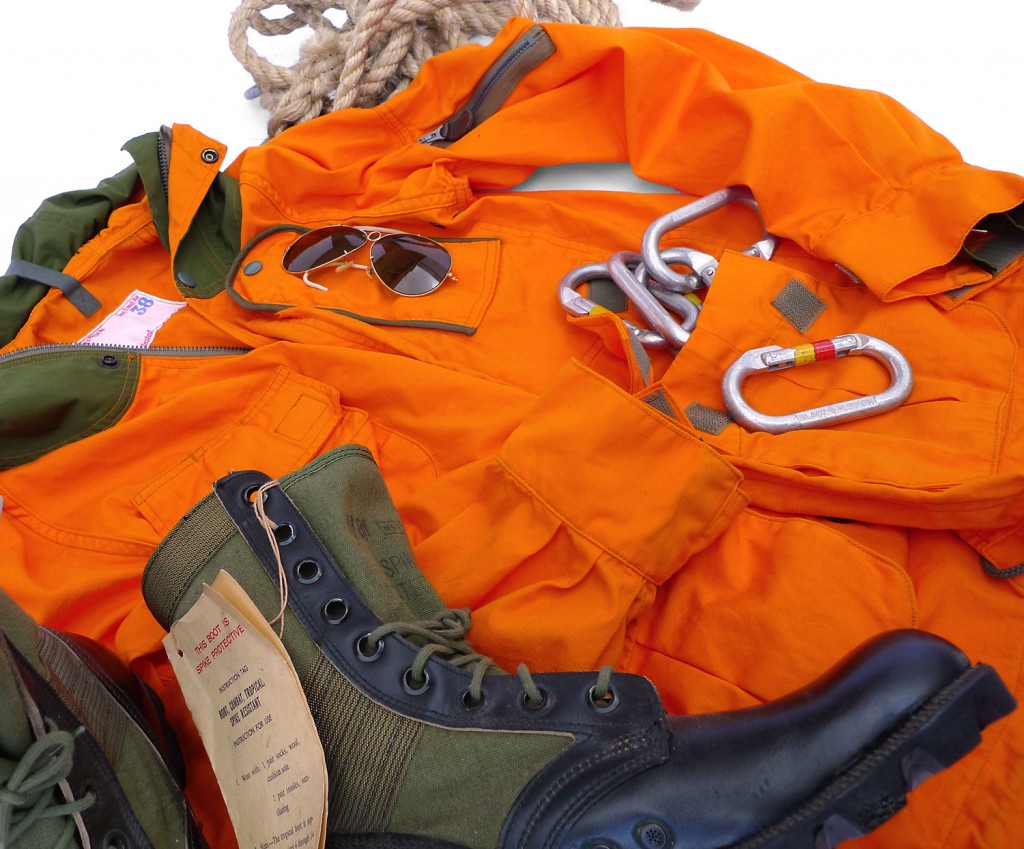 What’s up doc? Green top, orange body.
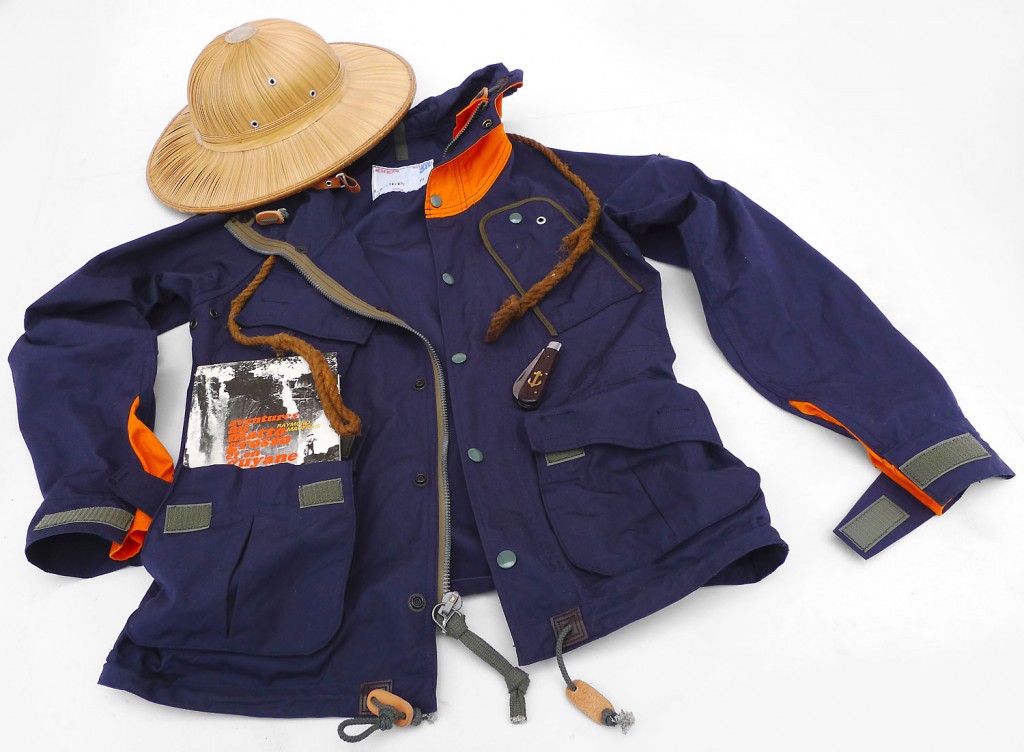 Another hat inspiration SKIPPER Jacket, Weather Cloth & Ripstop
“Sea Hunt” Collection, mfsc Spring 2014
One of these days, when they are made longer than 24 hours, I would love to embark on an attempt at documenting how a selection of time-tested 20th Century military garment designs originally came about…
We take for granted that iconic pieces exist, from the USN Peacoat to “The Hunter” MA-1 to Panama sole Jungle boots to “Taxi Driver” M-65… but gathering info on their drafting-table origins is a full-time job.
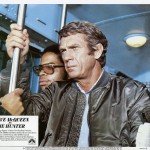 
The design thought and process, along with the names and faces behind these garments, would make a fascinating coffee table book. Before all gets lost to History and assuming none of this is under classified status, I believe someone should undertake this archival task.
I do not know the first thing about writing a book, so I’ll put this on the rear part of the back burner of my broken stove for now.
So, until then, you know it, it’s time for another story! Yeahhhh!
Let’s introduce our 2014 “Skipper”.
This tricked-up zip-up jacket got its nickname from being the top layer of choice of our “Sea Hunt” Team’s salty helmsman, when cruising tropical latitudes. According to the type of mission the Team was on, a color was chosen, orange being mostly reserved for search & rescue. Such missions included the fruitless expeditions to locate 23 year-old adventurer Raymond Maufrais who vanished on January 13, 1950 after entering the thick Guyanese Amazon jungle. In 1964, after 18 self-financed expeditions to Dutch Guiana, his father Edgar Maufrais was still searching for him…
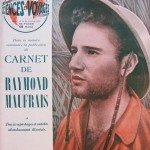 
On a lighter note, the “Skipper” jacket’s design is a pure hybrid and had its origin in a different type of jungle.
I am talking about a remote little town called Natick, some 20 miles from Boston, in the US of A…
It is not commonly known that some of the ‘unsung heroes’ behind many of today’s wearables have had residency in Natick, Massachusetts. Through years of behind-the-scene activities related to the Garment Industry, Natick’s real clothing designers deserve more awards than those distributed on ephemeral fashion week catwalks.
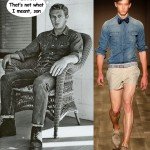 Never gets old… Natick is home of the ‘United States Army Soldier Systems Center‘, sometimes referred to as ‘Natick Army Labs‘.
Given military command’s keenness towards acronyms, the SSC’s denomination and responsibilities have greatly evolved over time, since its QRF (Quartermaster Research Facility) inception days, around 1952.
But that’s where the stuff gets designed. And tested. Like for real.
If you own a piece of vintage Government Issued US military field gear from the 1960’s, chances are its concept came out of some lab around Natick.
Today, for a portion of the roughly 2000 strong personnel working on the premises, the mission is to research and test for the US Army, from textiles to rations to camouflage patterns…
In order to better equip those in the fields according to needs and deployment specifics, uniforms and gear are subject to advanced technological tests and targeted engineering.
Then, we, little designers, get to reap from that R&D in total impunity, since military designs seem to fall under public domain the moment they are released. Stick a woven tab on the rear pocket of denim jeans however, and you get the heavies and a Cease and Desist 😉
Two photos below are courtesy of NSRDEC, Natick Soldier Research Development and Engineering Center. The denim jacket, from MF® archives, is an experimental USN 1970’s coat out of a Natick facility. It didn’t make the mark and that pattern never put in production.
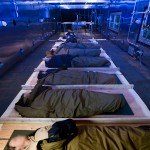 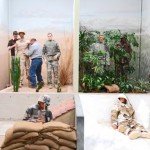 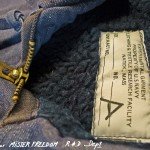
Back on point, our Spring 2014 “Sea Hunt” SKIPPER Jacket owes some of its hybrid specifics to one of the jacket a Natick lab started concocting in 1962.
Namely the MIL-C-43199 (Coat, Man’s, Combat, Tropical) familiar to fans of Apocalypse Now and other jungle-fever types.
-
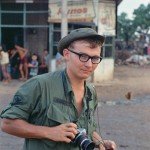
-
Courtesy Charlie Haughey, Vietnam 1960s
-
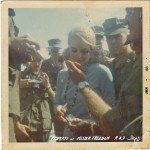
-
Chris Noel, Chu Bai, Vietnam, 1968
-
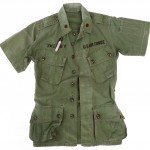
-
Major Sweeney’s Tropical Combat Jacket, 1rst Pattern (MF® Archives)
We borrowed the slanted chest cargo pocket pattern from that tropical jacket, along with its lower cargo pockets. We opted for what is known, to above mentioned jungle-fever types, as the Second Pattern (issued in 1965). That modified pattern featured concealed buttons, as the exposed button models proved to get snagged when in the bush not yet napalmed.
We decided to get rid of the buttons altogether, we’re crazy like that, and replace them by the ultra-hi-tech invention of the day: the “Hook and Loop Fastener” system, invented in 1948, aka Velcro®.
Also, because we know that your summer plans include crossing the Congolese swamp land from West to East á la ‘Babinga-Pongo’, we were thoughtful enough to include ‘drain holes’ in the three cargo pockets (small round stitched eyelets allowing you to keep only the piranhas after a marsh bath.)
Additionally, an arm-wrestling contest with a man-eating swamp crocodile tends to make one work up a sweat, so we have added mesh-screen type eyelets to the underarms.
You’re welcome.
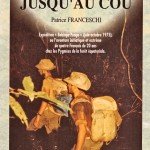 A Congolese swimming pool, 1975 Again borrowed from the US QM Depot are the heavy “Crown” zippers, often featured on field gear in the 1960’s (M-65 jackets for instance.)
Another military reference is the left chest snap pocket, originally the thigh pocket of an orange USAF coverall that held the knife that would cut tangled paracord. The arm ‘cigarette’ pocket is also borrowed from vintage flight gear, and will now hold your iPod, just because smoking is bad.
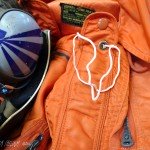 
Our hybrid “Skipper” jacket also features some non-mil flagrant influences. It freely borrows from vintage late 1960’s-70’s Sierra Designs® 60/40 mountain parka type detailing, such as snap wind-flaps, two-tone hood, leather pull toggles, gusseted wrist cuffs…
And now the “Fine, fine already, but does it come in black?” chapter:
The fabric options consist of two colors of tightly woven 100% cotton 6 Oz. weather cloth, navy blue and olive green.
A third option, an entirely different textile, is an orange 100% cotton 4.75 Oz. RIPSTOP fabric.
Urban legend has it that the six pockets of the orange ripstop “Skipper” jacket where all needed to holster the many batteries that made it so blindingly bright.
For pairing suggestions, the photos bellow display a full range of multiple and fashionable outfit options. Immediate attention on your bicycle ride to work guaranteed.
MF®, always pushing the boundaries of Trend Forecasting.
-
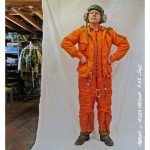
-
Recommended Spring 2014 Look #1
-
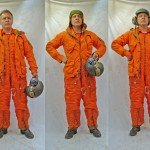
-
Recommended Spring 2014 Look #2, 3,and 4
-

-
Royal Canadian Air Force hipsters
-

-
Still a bit shy
-

-
The roots of it all
-
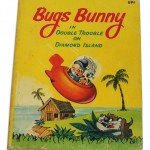
-
Classified MF® R&D Dept documents
Now, after rendering unto Caesar that which is Caesar’s, ie. duly crediting the US Army + George Marks & Bob Swanson of Sierra Design®, let me shamelessly state the following…
The Spring 2014 “Sea Hunt” Skipper Jacket was designed in California by Mister Freedom® and manufactured in Japan as a collaboration with Sugar Cane Co.
SPECS:
FABRICS
a) Navy Weather Cloth: 100% cotton 6 Oz. tightly woven windbreaker popeline, milled in Japan.
b) Jungle Green Weather Cloth: 100% cotton 6 Oz. tightly woven windbreaker popeline, milled in Japan.
c) Orange Ripstop: 100% cotton 4.75 Oz. ripstop fabric, milled in Japan.
According to how you decide to roll your hoodie (= which color will be facing) when secured with the adjustable cinch-strap, the jacket will look two-tone or single tone.
The Navy option has orange accents, the Jungle green option has navy accents, the Orange option has Jungle green accents. And no, the Skipper doesn’t come in green with orange accents, nor in black.
DETAILS:
* An original mfsc pattern, hybrid of 50’s-60’s US military gear and 1970’s mountain parka outdoor-type jackets.
* Un-lined, with flat-felled inside seams, no overlock or exposed seams.
* Heavy mil-spec 1960’s type “Crown” zipper.
* Windflap with DOT-type mil-specs snaps.
* Five pockets:
– Three ‘Vietnam’ combat jacket style Velcro® flap pockets with drain holes and one pen pocket.
– One iPhone chest snap pocket.
– One forearm iPod zipper pocket.
– One concealed chest pocket.
* Gusseted wrist cuffs, two-tone.
* Leather drawstring toggles and cinch eyelets.
* Underarm metal mesh-type eyelets.
* Rollable two-tone hood
* Drawcord hood and bottom, for wind protection.
* Tonal 100% cotton stitching.
* Made in Japan.
WASHING/SIZING:
The Skipper is cut fairly trim but is wearable as a layer according to your build.
I wear a size 38 (medium) Skipper, my usual size in mfsc, with enough room for a light shirt and denim jacket/sweater underneath if needed.
All three fabric options come unwashed, as usual, and will shrink to approximate similar measurements (although our carrot Ripstop fella is slightly longer.)
We recommend an original cold soak, spin dry cycle and line dry.
When cleaning is needed, gentle washing cycle in cold water with minimal detergent will do the trick. Because of the heavy mil-spec type zipper + other metal parts and the relatively thin fabric , care should be taken not to subject the jacket to harsh machine washing.
When in doubt, professional cleaning is always a good option, for those with an environmentally-friendly cleaner in the neighborhood.
Please refer to cold soak/line dry measurements chart (note that, although not recommended, hot water and heat dryer use will result in further shrinkage and probable damage to the leather parts.)
Also note that due to the raglan sleeve pattern, the sleeve measurements were taken from pit-to-cuff (not shoulder-to-cuff.)
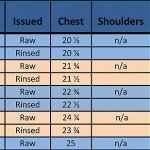 Orange Ripstop 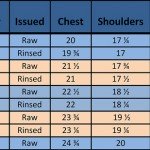 Weather Cloth Available RAW/unwashed.
SIZES:
36 (Small)
38 (Medium)
40 (Large)
42 (X-Large)
44 (XX-Large)
Retail
a) Navy Weather Cloth $649.95
b) Jungle Green Weather Cloth $649.95
c) Orange Ripstop $649.95
Soon available from www.misterfreedom.com
Please call 323-653-2014 or email sales@misterfreedom.com with any questions not answered above.
Thank you sincerely for your support.
Now I just need to haul the 3,200 Lbs of props back in storage.
BRB
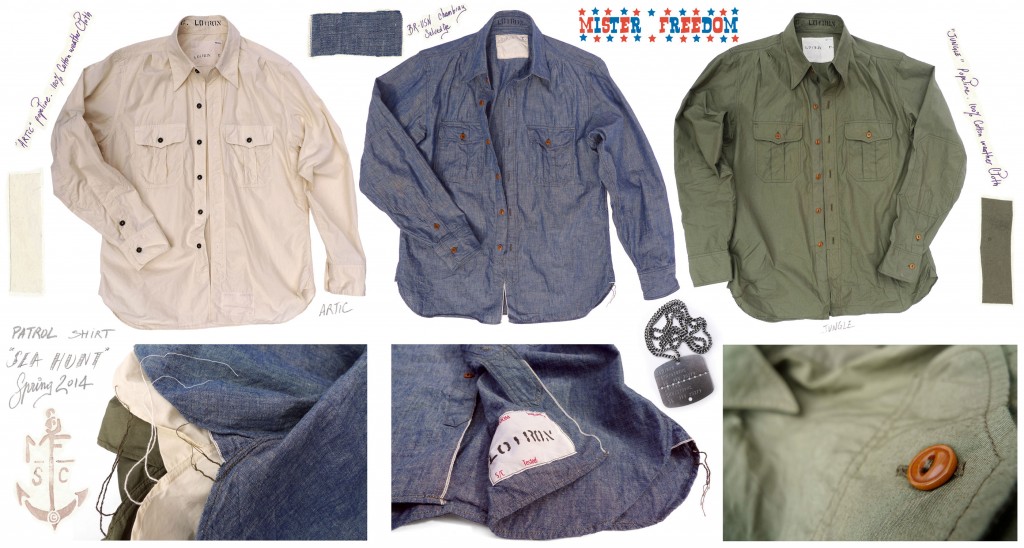
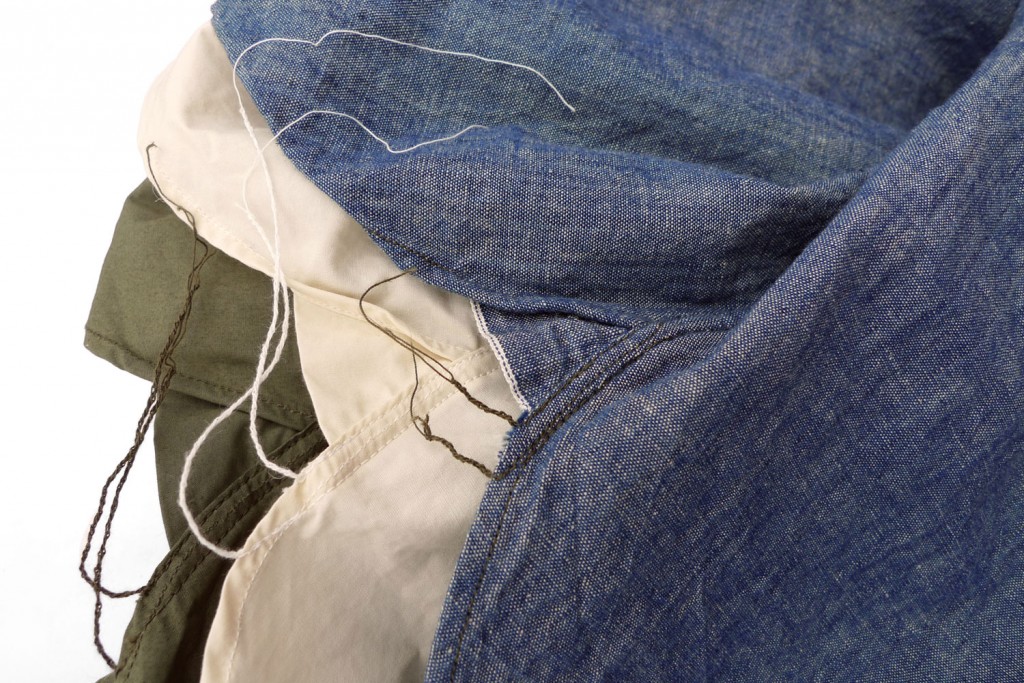
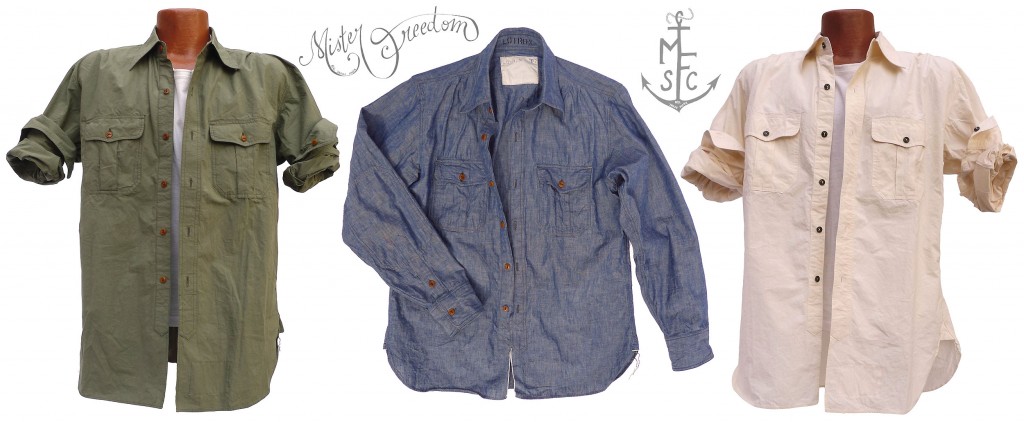
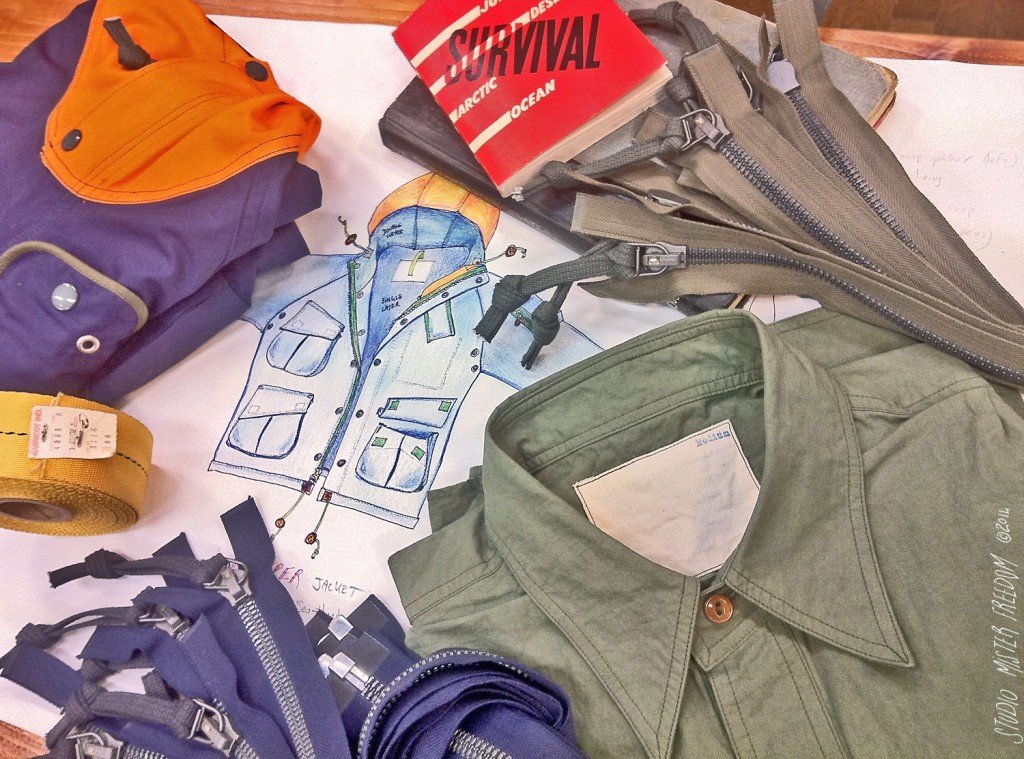
Patrol Shirt: Weather Cloth & USN Chambray
‘Sea Hunt’ Spring 2014
If you have planned, for the upcoming weekend, to go up the Rio da Dúvida (the ‘River of Doubt’ for Theodore Roosevelt, referring to its unexplored meander) to confirm which way it flows, you might want to opt for the ‘Jungle’ Patrol Shirt. You never know, you might need to hide from that party of un-contacted and rightfully aggravated Cinta Larga people. As they are greeting your Sunday outfit with a welcoming volley of curare-dipped arrows, an olive green shirt might help you blend in that 130 feet tall patch of rubber trees.
That moment when you realize you should have listened to the amazing Cândido Rondon and chilled with a glass of cauim at home…
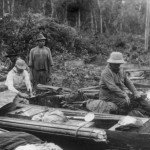 A rare photo of that historic moment when Theodore Roosevelt (right) allegedly pronounced these important words: “Well son, f*ck THAT sh*t.” (Rio da Dúbida, Brazil, 1914) 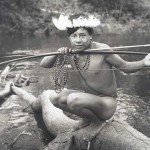 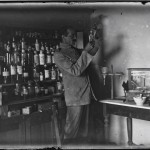
Alternatively, you might go for the ‘Arctic’ Patrol Shirt, should you want to defy the warnings of the Mount Hood rangers lecturing you on the very limited insulating properties of cotton. Indeed, cotton, the “cloth of Death” as it is known in Evac and Rescue Team circles around the World, will not be your best companion on the Timberline Trail. You’ll look good though. Dead, but good. Please note how I have now learned how to spell ‘Arctic‘.
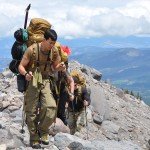 Courtsey of Portland Pararescue Reservists If you’re going UP the gangplank after the AATGA call (“All Ashore That’s Going Ashore”), you are probably the ‘Chambray’ type.
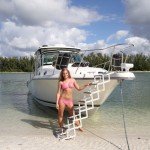 Courtesy of Gr8-White accordeon gangplank The featured shirt of our “Sea Hunt” Spring 2014 collection was inspired by several vintage shirts from our dusty archives.
Throwing military/safari/uniform details in the MF® blender, the resulting PATROL SHIRT is an apparently simple looking shirt. It features some fancy details however, most of which only the wearer will notice. Take a look at the bottom of the button placket, on the inside, and you will see some interesting folds and challenging pattern making magic.
The chambray version displays a few inches of selvedge on both sides of the front panels, a nice tricky detail hidden from sight for those who choose to wear their shirts tucked-in.
Elbow patches, box-pleat pockets, expansion ease-pleats, rounded wrist cuffs… and other details complete our Patrol Shirt.
After a meeting with the MFTFD (MF® Trend Forcasting Dept.), we thought there was no need for an enormous embroidered rhinestoned silkscreened graphic in the back of the shirt, so we left that simple. Rooooaaaarrr…
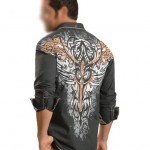 easy tiger… Sorry about that.
Anyways, the narrow ½ cm flat felled side seams will also not go un-noticed by vintage clothing aficionados. These old narrow width ‘caballo’ machines are as common as frog hair wigs and are a prized recent addition to the finely tuned equipment used by the small family owned factory crafting these Patrol Shirts in Japan.
I also chose to do without épaulettes, for a more casual and less obvious military/safari feel.
The Patrol Shirt comes in three fabric options.
What we are calling ‘weather cloth’ is a reference to a tight plain weave popeline type of fabric quite in use in the old days for outdoor gear, as well as in the military. ‘Weather Cloth’ took different forms according to weight, fabric content and coating. These types of fabrics are sometimes referred to as ‘Storm Cloth’, ‘Sierra Cloth’, ‘Mountain Cloth’ and are known for their windbreaking qualities. They are at times treated for waterproofing.
Our ‘Weather Cloth’ in a fine lightweight 100% cotton popeline, uncoated and untreated, in two color ways, natural and olive green.
The third fabric option is borrowed from the Buzz Rickson’s catalog. I really liked Toyo’s WW2 USN chambray fabric and we helped a few rolls fall-off the “Deuce and a Half” for our own Spring 2014 mfsc production.
a) “Arctic” Weather Cloth: crispy all cotton tight weave popeline, unbleached white. Woven in Japan.
b) “Jungle” Weather Cloth: crispy all cotton tight weave popeline, ‘washed’ olive green. Woven in Japan.
c)BR’s USN Chambray: Vintage type 100% cotton blue chambray fabric, slubby and sturdy, selvedge with white/blue line ID, milled in Japan.
The ‘Sea Hunt” Patrol Shirt is designed in California by Mister Freedom® and manufactured in Japan in collaboration with Sugar Cane Co.
NOTE: Production of the ‘Patrol Shirt’ does NOT come with someone’s name stenciled on them. Product photos are perso shirts, recently issued and custom marked.
SPECS
FABRICS:
a) “Arctic” Weather Cloth: crispy all cotton tight weave popeline, unbleached white. Woven in Japan. The Arctic option features olive green corozo buttons and tonal stitching.
b) “Jungle” Weather Cloth: crispy all cotton tight weave popeline, ‘washed’ olive green. Woven in Japan. The Jungle option features maple brown corozo buttons and tonal stitching.
c) BR’s USN Chambray: Vintage type 100% cotton blue chambray fabric, slubby and sturdy, selvedge with white/blue line ID, milled in Japan. The Chambray option features maple brown corozo buttons and olive green stitching.
DETAILS:
* All original mfsc pattern, inspired by vintage military, uniform and safari type shirting.
* Comfortable fit.
* Double box-pleat chest pockets, buttoned flap.
* 1940’s style collar pattern.
* Early custom uniform tailoring button placket.
* Elbow reinforcement patches.
* Side gussets.
* Double front & back expansion EZ-pleats on shoulder yoke.
* Corozo buttons, aka ‘ivory nut’, 100% wood.
* High stitch count 100% cotton stitching.
* Vintage ½ cm wide flat-felled seam side construction.
* Double inside labeling: simple ‘minimalist’ neck patch (unbleached popeline stamped with sizing), and woven ‘Sea Hunt’ rayon label on bottom front panel (inside). Both to accommodate your own custom markings, if desired.
* Made in Japan
WASHING/SIZING:
All three fabrics should shrink to approximately the same fit. Having said that, both Arctic and Jungle weather cloth options do, but the chambray version feels a tad bit roomier. We have not, however, shrink-tested our samples with hot water/heat-dryer, which might even out the differences. If not, finding the Sacred Ark will be the only way to figure out why.
Until then, we recommend an original cold soak, spin dry and line dry.
Further care should be the low maintenance combo mild detergent/gentle cycle/cold water/line dry, as needed.
I wear a Medium in the three options, with a bit more room in the Chambray.
Please refer to chart for cold rinse/line dry measurements.
 Weather Cloth 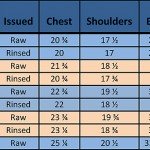 Chambray
Available RAW/unwashed.
SIZES:
Small
Medium
Large
X-Large
XX-Large
Retail
a) Arctic Weather Cloth $299.95
b) Jungle Weather Cloth $299.95
c) BR’s USN Chambray $329.95
Available from www.misterfreedom.com
Please call 323-653-2014 or email sales@misterfreedom.com with any questions not answered above.
Thank you sincerely for your support.
|
















































































